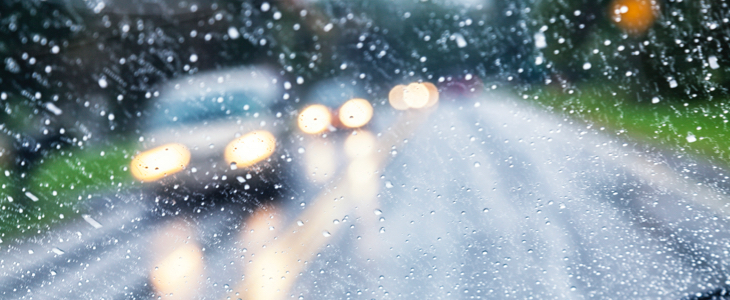Navigating the roads in Texas during dangerous weather conditions requires a combination of preparation, knowledge, and skill. Texas is a large state with varied terrains and weather patterns, so it is important to be aware of the specific conditions you may encounter. Here are some steps and tips to help you navigate safely:
- Stay Informed: Check local weather forecasts before heading out, especially for longer trips. Many stations will provide current weather conditions and traffic reports. Use smartphone apps or navigation systems with real-time weather and traffic alerts.
- Avoid Driving If Possible: If severe weather is predicted or occurring, consider delaying or canceling your trip. It is often safer to wait until weather conditions improve before venturing out.
- Vehicle Preparation: Ensure your vehicle is in good working condition. This includes checking the brakes, tires (and tire pressure), lights, battery, and wipers. Remember to keep your gas tank at least half full. It is also advisable to carry an emergency kit, including items like water, non-perishable snacks, flashlight, blankets, jumper cables, and basic tools.
- Reduce Your Speed: Always adjust your speed to match the conditions. Wet or icy roads can significantly increase stopping distances.
- Increase Following Distance: Give yourself more time to react if the car in front of you brakes suddenly.
- Turn On Headlights: Even during daytime, this increases visibility for you and other drivers.
- Avoid Hydroplaning: Hydroplaning occurs when your tires lose contact with the road due to a layer of water. To prevent this, reduce your speed in heavy rain and avoid puddles. If you begin to hydroplane, ease off the gas pedal and steer in the direction you want to go. Avoid sudden braking or turning.
- Beware of Ice: While Texas does not usually have snowy conditions, it can occasionally experience icy patches. If you encounter ice, reduce your speed, avoid sudden maneuvers, and use gentle braking if equipped with anti-lock brakes.
- Tornado Precautions: If there is a tornado warning, do not try to outrun it in your car. Find a sturdy building to take shelter in. If none is available, lie flat in a ditch away from your vehicle and cover your head.
- Flooding: Avoid driving through flooded areas. It takes only a few inches of flowing water to sweep away a car. If waters are rising rapidly around you, get out of the car and move to a higher ground.
- Try to Remain Calm: In adverse conditions, it is important to stay calm and to try not to panic. Panicking can lead to hasty decisions and increase the risk of an accident.
- Use Safe Driving Techniques: Practice some of the following techniques: 1) Hold the steering wheel with both hands; 2) If visibility is extremely poor due to conditions like fog or heavy rain, pull over safely and wait for it to improve; 3) Always signal your intentions to other drivers when turning or changing lanes;
- 4) Stay Aware-keep an eye out for emergency vehicles, and be prepared to move over or stop.
If despite all of your best efforts and defensive driving, you find yourself involved in an automobile accident as a result of dangerous weather conditions, here are some general steps and remedies to consider:
- Document the Scene: Regardless of weather conditions, always document the accident scene. Take photographs, note the conditions, and gather contact information from witnesses.
- Insurance Claims: Your first remedy is often to file a claim with your insurance company. Depending on the type of insurance coverage you have (e.g., collision, comprehensive), your policy might cover damages resulting from weather-related accidents.
- Personal Injury Claims: If you were injured due to someone else’s negligence, even in poor weather conditions, you might have a valid personal injury claim. This could be the case if the other driver was driving recklessly given the weather conditions.
- Property Damage Claims: If another party’s negligence caused damage to your property, you could file a claim for the cost of repairs.
- Premises Liability: If dangerous weather conditions existed on someone’s property and they didn’t take reasonable steps to prevent accidents (like clearing ice from a walkway), they might be liable for any injuries you sustained.
- Product Liability: If a product, like your vehicle or its components, failed to work properly in certain weather conditions and it led to an accident, the manufacturer might be liable.
- Negotiation with At-Fault Parties: If another party is at fault, or partially at fault, you can negotiate directly with them or their insurance company to get compensation for your damages.
- Legal Action: If negotiations are unsuccessful, you might consider filing a lawsuit against the responsible parties.
- Consult With An Attorney: It is always a good idea to consult with an attorney if you have been involved in a weather-related accident, especially if there are significant injuries or damages. An attorney can advise you on the best course of action and help you navigate the legal process.
Takeaway
Since every accident is unique, and the remedies available depend on the specific facts of the case and the laws of your jurisdiction, consulting with an experienced personal injury attorney is extremely useful. Ceja Law, PLLC has experienced attorneys who can help you understand your rights and options. We can provide an initial free consultation to help you decide if you would like to use our services.
